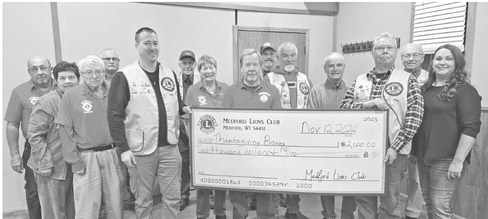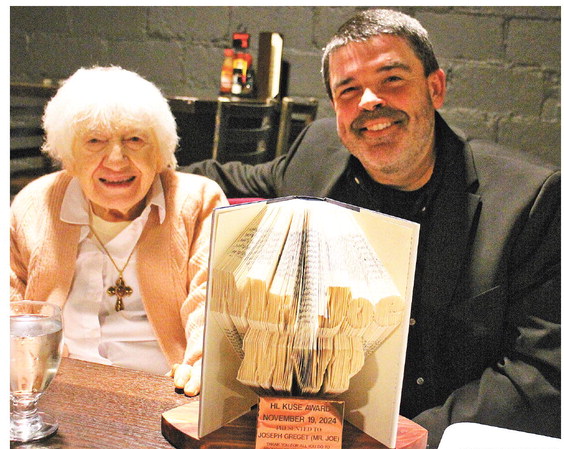Board holds workshop on upgrades to high school
Balancing needs versus wants was the focus of the June 17 workshop session of the Medford School Board as the district moves toward a possible referendum on the November 3 ballot.
The board met with architects and engineers from Findorff/PRA the design consultants who have been working with the district for more than a year to identify the structural and educational needs of the more than 50-year-old high school.
A key resource for the workshop’s discussion was the survey conducted by a professional survey group in March and April of this year. That survey asked people to prioritize what they felt the needs of the district were in relation to a number of proposed projects totalling $55.65 million. More than 1,000 district residents took part in the poll with very large representation from district residents who neither work for or have children currently in the school system.
The survey analysis also showed at what level of spending people would support a potential referendum. According to the survey, a majority of district residents would support a referendum at between $35 million and $40 million with higher priority given to safety/security concerns, updating building systems and expanding tech ed and classrooms. There was less support for updating the cafeteria area, theater and gym spaces.
This ranking played heavily into last week’s discussion as board members reviewed options on how to trim $15 million from the potential list of projects while still meeting longterm district needs. Representatives from Findorff noted in places where referendums have failed in recent years, it has been because school boards added things that the community did not want. District administrator Pat Sullivan noted there will have to be compromises and that while some groups such as theater or athletics may not get everything they had wanted, the plans include a major improvement over what they have now.
At one point in the discussion, board member Steve Deml suggested pulling some projects out to bring to voters in a few years. That idea was rejected by others on the board including board president Dave Fleegel who noted that the intent was to make the improvements needed to make the building functional for the next 20 plus years. “If you split off the gym you lose that,” Fleegel said.
Board members and representatives from Findorff reviewed a number of preliminary plan options that looked at buildings needs and where they could trim costs particularly in the physical education and theater areas which ranked low in priorities while still making the improvements worthwhile to do. The option that got the closest during the discussion calls for new office area in the front of the building, a classroom addition to the southeast corner, expansion of the library into the existing theater for additional collaboration spaces, addition of STEM classroom spaces and the tech ed building and a new theater and gym addition to the west.
There was discussion over how big of a gym should be built, while the survey had an estimated $15.1 million cost for the gym portion, the revision process is looking at closer to $5.6 million with the possibility of reducing it further. The space would be primarily for physical education classes and practice space with Raider Hall used for varsity games.
The preliminary design calls for a new 550 seat theater which will have a significantly larger stage and backstage area.
While smaller than the 700 plus seat auditorium that had been suggested in order to allow all students to be in the room at once, Sullivan noted that it will still be a big improvement over what is currently in place.
The preliminary plans call for changes in the parking adding a parking lot to the front of the building and reconfiguring parking in the rear of the building with engineers including concrete curbs and other traffic control items. Fleegel identified these as areas that could be eliminated noting the additional curbs add significant cost with little real benefi t. In addition, he noted they would also make plowing snow at the lot more difficult while reducing accessibility.
Engineers noted that removing the additional concrete could result in a large savings, reducing the potential cost.
Board members also discussed timing of when they should go to the voters. Statistically, referendums have a greater chance of being successful the larger the turnout of voters which would make this fall’s presidential election the target.
Some on the board questioned if the district should hold off until next spring to see if things were more settled with the COVID-19 pandemic. The downside is that it is approaching the one-year estimated shelf-life of the survey. It was also noted that the largest number of survey responses came in during the time when the state was under the Safer at Home restrictions.
In order to make the deadline to be on the November ballot, the board will have to decide at the July school board meeting. Meanwhile, the designers and the working group at the district will continue to refine plans to bring the dollar amount below the $40 million threshold.


